#Oungan
Explore tagged Tumblr posts
Photo

A manbo (also written as mambo) is a priestess (as opposed to a oungan, a male priest) in the Haitian Vodou religion. Haitian Vodou's conceptions of priesthood stem from the religious traditions of enslaved people from Dahomey, in what is today Benin. For instance, the term manbo derives from the Fon word nanbo ("mother of magic"). Like their West African counterparts, Haitian manbos are female leaders in Vodou temples who perform healing work and guide others during complex rituals.
This form of female leadership is prevalent in urban centers such as Port-au-Prince (the capital of Haiti). Typically, there is no hierarchy among manbos and oungans. These priestesses and priests serve as the heads of autonomous religious groups and exert their authority over the devotees or spiritual servants in their hounfo (temples).
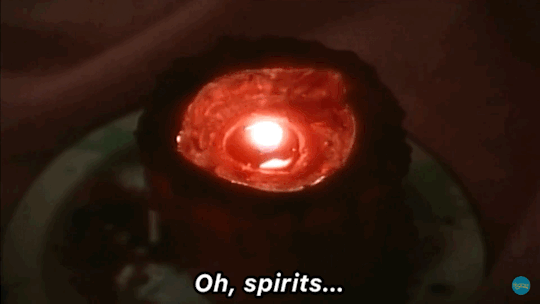
Manbos and oungans are called into power via spirit possession or the revelations in a dream. They become qualified after completing several initiation rituals and technical training exercises where they learn the Vodou spirits by their names, attributes, and symbols.
The first step in initiation is lave tèt (head washing), which is aimed at the spirits housed in an individual's head. The second step is known as kouche (to lie down), which is when the initiate enters a period of seclusion. Typically, the final step is the possession of the ason (sacred rattle), which enables the manbos or oungans to begin their work. One of the main goals of Vodou initiation ceremonies is to strengthen the manbo's konesans (knowledge), which determines priestly power.
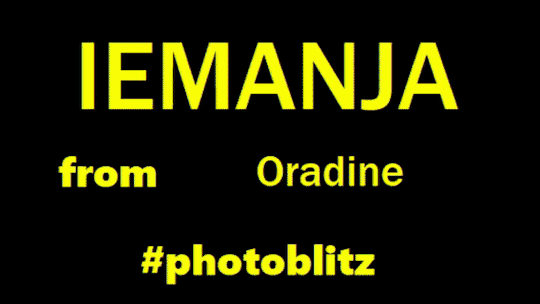
The specific skills and knowledge gained by manbos enable them to mediate between the physical and spiritual realms. They use this information to call upon the spirits through song, dance, prayer, offerings, and/or the drawing of vèvès (spiritual symbols). During these rituals, manbos may either be possessed by a loa (also spelled lwa, Vodou spirits) themselves, or may oversee the possession of other devotees. Spirit possession plays an important role in Vodou because it establishes a connection between human beings and the Vodou deities or spirits. Although loas can "mount" whomever they choose, those outside the Vodou priesthood do not have the skills to communicate directly with the spirits or gods. This is because the human body is merely flesh, which the spirits can borrow to reveal themselves via possession. manbos, however, can speak to and hear from the Vodou spirits. As a result, they can interpret the advice or warnings sent by a spirit to specific individuals or communities.
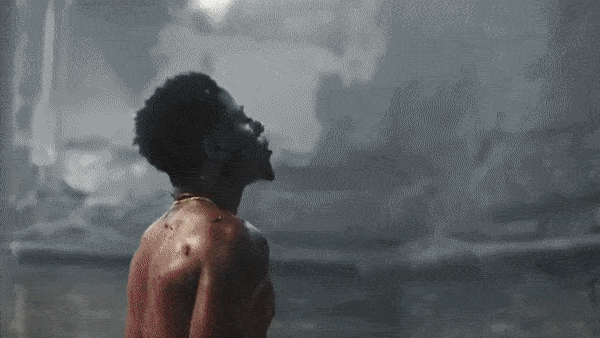
Cécile Fatiman is a Haitian manbo famously known for sacrificing a black pig in the August 1791 Vodou ceremony at Bois Caïman—an act that is said to have ignited the Haitian Revolution. There are also notable manbos within the United States. Marie Laveau (1801-1888), for example, gained fame in New Orleans, Louisiana, for her personal charm and Louisiana Voodoo practices.
Renowned as Louisiana's "voodoo queen", Laveau's legacy is kept alive in American popular culture (e.g., the television series America Horror Story: Coven).ne Mama Lola is another prominent manbo and Vodou spiritual leader in the United States. She rose to fame after the publication of Karen McCarthy Brown's ethnographic account Mama Lola: A Vodou Priestess in Brooklyn. Mama Lola's success provided her with a platform to challenge Western misconceptions of Haitian Vodou and make television appearances

#kemetic dreams#vodun#cecile fatiman#manbo#bois caiman#manbos#haitian#marie laveau#new orleans#new orleans voodoo#mama lola#vodou#lwa#oungan#nando#fan#west african#west african vodun#mother of magic#joey bada$$#brooklyn
291 notes
·
View notes
Text
"The god who created the sun which gives us light, who rouses the waves and rules the storm, though hidden in the clouds, he watches us. He sees all that the white man does. The god of the white man inspires him with crime, but our god calls upon us to do good works. Our god who is good to us orders us to revenge our wrongs. He will direct our arms and aid us. Throw away the symbol of the god of the whites who has so often caused us to weep, and listen to the voice of liberty, which speaks in the hearts of us all."
- Oungan (Vodou priest) Dutty Boukman, his Bois Caiman speech. These are the words that incited the Haitian Revolution on the night of 22 August 1791.
#history#haitian vodou#oungan#haiti#haitian revolution#revolution#anti colonialism#quote#black jacobins#vodou#pagan#caribbean#war#afro caribbean#bois caiman#haitian creole
2 notes
·
View notes
Text

Dutty Boukman was a key figure in the Haitian Revolution and is remembered as a religious and revolutionary leader. He was likely born around 1767, possibly in Senegambia (West Africa), though his exact place of birth is uncertain. According to some historical accounts, Boukman was originally enslaved in Jamaica, where he worked on plantations. His nickname "Boukman" is believed to come from his literacy or knowledge of religious texts—he may have been called "Book Man" for his ability to read, a rare skill among enslaved people.
While in Jamaica, Boukman may have been exposed to the island's cultural mix of African spirituality and Christian influences. However, after an attempted revolt or for being considered rebellious, he was reportedly sold by his British owners and transported to Saint-Domingue (modern-day Haiti), a French colony. There, he continued working as an enslaved person but became a leader within the Vodou religious community.
Boukman’s role in the Haitian Revolution is best remembered for the Vodou ceremony he led at Bois Caïman on August 14, 1791. This gathering of enslaved Africans is considered a turning point that inspired the large-scale uprising against the French colonial regime. Boukman's powerful spiritual leadership and revolutionary vision helped ignite the revolution, which ultimately led to the creation of Haiti as the first independent Black republic in 1804.
Not long after the revolt began, Boukman was captured and killed by French forces in November 1791. His death was meant to discourage the revolution, but instead, it solidified his status as a martyr and symbol of resistance against colonial oppression. Boukman’s legacy is celebrated in both Haitian and Jamaican history as a symbol of defiance and the fight for freedom. 🇭🇹
#black people#black history#black#black tumblr#pan africanism#blacktumblr#black conscious#black power#black empowering#africa#jamaican#haiti revolution#haitian#african culture#unapologetically african#unapologetically black#black freedom#black revolutionaries#black revolution#black leaders#strong black man#strong black men#Senegambia#senegal#gambia#Dutty Boukman#maroons#Oungan#haitian vodou
125 notes
·
View notes
Text
Scleritas: don't worry sir you will get back to fucking corpses in no time flat
Lovage: Idk I don't think Astarion really likes me all that much. Unless- did he say something to you? Do you know something I don't?
Lovage was a necrophiliac? 🤨
#oh unrelated but does scleritas' design also feel awful to anyone else or am i making something out of nothing#it's the nose and also his hat that's seemingly inspired by like. insensitive portrayals of oungan#and he's your butler... am i imagining things. i have seen no one talk about it
5 notes
·
View notes
Text
Pairing: Edouard/Annette Rating: T Prompt: Pining/Jealousy
Chapter-Specific Author commentary:
Uh... originally I just wanted to write a simple, fluffy oneshot of Annette in a karabela dress (this draft pre-dated Season 2 so I at the time, I wasn't even sure if Annette would even wear a dress, since S1 her dress seems to be more on the practical side). However, as I began writing, I began questioning the logistics of what was or wasn't available while Annette and Edouard were living in the mountains, or how maroons lived in general, really.
The original *~*~vision~*~* was to have Annette wear this dress and perform in the Vodou ritual and Edouard watching Annette dance and he falls madly smitten for her oop, but of course that got shot when I did more research and there's an attire you're supposed to follow. However, I got way too attached to the idea of cute Annette in a dress to scrap the entire thing, so here we are...
I did take some creative liberties on what materials were and weren't available, as well as postulating what their sleeping quarters might have been probably more nicer than what it actually was.
I've done a lot of reading of Haitian maroonage and demographics since then... and here are some elements that made it into the fic (there's so much more I have, just couldn't fit it all in!)
...
General Location and Geography
Annette mentions 'being taken to the mountains.' As established, Cap Francais is the city that Edouard was in (the Comedie Au Cap theatre), and the eventual location of the August 1791 slave revolts (as depicted in the show), If we examine the topography, a 1784 map shows Cap-Francais surrounded by mountainous terrain.


P.S. For the exact location of the Comedie Au Cap. If you zoom in, you can see right next to the government building, the Salle de Spectacle, or Performance Hall.
Sunday markets in the major towns like Cap Français were opportunities for blacks – free, enslaved, and runaways alike – to converge and interact, buying and selling food, and exchanging services. Note that Cap-Francais due to its dense urban population, were known for blacks to pass as free people of color (forging their own freedom documents), as well as serving as "safe houses" for runaway slaves to take refuge in.


In the map (left), it is readily apparent the relative concentrations of how many slaves escaped to Cap-Francais. For example, the neighborhood of Petit Guinée in Cap Français was a regular destination for runaways to find housing, lease themselves out for pay, and blend in with the growing population of free people of color.
The Bois Camain Ceremony, which is the Vodou ceremony we see represented in the show. Historical accounts of this ceremony note it was led by Cecile Fatiman (depicted from the show) and Dutty Boukman, both priestess (manbo) and priest (oungan). I decided to namedrop Dutty in just for fun, only because it didn't feel right to pluck a random name from the slave runaway advertisements.
Note the actual exact location is still up for debate. Many accounts point to somewhere near northern town of Morne-Rouge (present-day Vaudreuil, Haiti). Present-day, the contemporary Bois Caiman historical site in Vaudreuil, Haiti is ~10 km west of Cap-Haitien.
Population Demographics


At the peak of the revolution, Saint Domingue (later Haiti), which had 500,000 slaves, 32,000 whites, and 28,000 free blacks (which included both blacks and mulattos). Slaves made up 9/10ths of the population, with 500K+ african slaves being imported to Haiti alone in the last 50 years leading up to the revolution.
Enslaved Demographics
Men disproportionately made up the escaped reported runaway slaves and the maroonage.
Men were also more likely to occupy artisanal labor positions that allowed them a certain amount of latitude during the workday. Examples like coopers, carpenters, shoemakers, fishermen, and other artisans ran errands, apprenticed and were leased by their owner to other plantations, or hired themselves out to earn their own money.
Conversely, enslaved African women in Saint-Domingue were overrepresented as field workers and performed the most physically taxing jobs and under constant supervision. Because of the relative mobility enslaved men could have, this partially explains the overrepresentation of men for escaped slaves. Skills enslaved women acquired usually include seamstresses, laundress, and acting as market vendors selling goods.


In a study of 12,857 slave runaway postings, men made up 80%, or ~10K. Nègres - African mother + African or Creole man; Mulâtres - biracial (often coerced relations between white men); Griffe - 2/3 black. Quarteronne - 1/4th black.
There were many facets which may partially explain why women were so underrepresented as runaways, as women often had work within the constraints of society to pass as free, as well as the reproductive burden enforced on them.
Maroon Life and Struggles
The tl;dr -- trying it rough it out there in the wild was tough as shit and Maroons had to get creative in navigating the geographic topography and utilizing the terrain to their advantage. For example, one group of the maroons situated themselves in the mountains within the cusp of Saint-Domingue and Saint-Domingo (the portion of Haiti owned by Spain), such that they took advantage of murky ambiguities of "who's problem is this" territory. Retreating in the mountains also obviously disincentivized slave catchers to trek up there.
Due to the difficulty of accessing finished goods (clothing, glassware, etc) and weapons to arm themselves, maroons across the Caribbean had two ways of sustaining their supplies: engage in skirmishes/raids against plantations, or choose to engage in trade. Maroon settlements also tend to have varying success regarding based on how well-established/populated they were (some settlements were like, as little as one person in a swamp); some even forming agreements with governments to form peace treaties or even partake in catching runaway slaves to sustain themselves. The more established and successful settlements were able to cultivate crops even and keep domesticated livestock for food.
In the late 18th century, following the 1750s, the growing demand for land to support plantation agriculture, driven by the booming sugar and coffee industries, made it increasingly challenging to find and establish maroon settlements (see: the figure where in the last 50 years leading up to the revolution, over 500K african slaves brought to Haiti). This expansion encroached on existing settlements and threatened the safety of any remaining secure territories.
Daily Life and Personal Items
Archaeological dig sites efforts across 3 Haitian Maroonage sites yielded ~9000 artifacts in total, with the most common being pottery shards (making up 30-50% of the finds), porcelain, glassware, tobacco pipes fragments being the most common. It is likely that finished goods like imported pottery suggests that they were purchased by slaves from local markets, hinting that slaves did travel to markets to procure the needed finished goods not readily available.
Domestic animal bones that were also uncovered like pig, cow, sheep/goat, wild bird, and fishing weights/marine shells also hints at hunting. fishing for sustenance depending on the geography.
Other materials like hand-made-bricks, mortar, and nails.
Other less common items were uncovered, such as items for personal adornment or leisure/craft activities. Instances hinting to clothing fragments atypically in possession by the enslaved (i.e., a button belonging to a gentleman's sportscoat or frock) were also discovered.
Maroons were known to make hut-like structures from mud and leaves.
Other random things that came up in my fic
Zabeth is a name I sampled from a runaway slave advertisement who ran away alongside someone else Cecile. (Probably not the same Cecile Fatiman, though!)
The maréchaussée were the police responsible for catching runaway slaves, and was required by free men of color to serve a three year draft; or a passageway for mobility/options for free men of color who found themselves otherwise strapped for opportunities. I can only imagine, if Edouard was indeed subject to the draft, how that must have hurt his soft heart!
Ounsi temerè (fearless ounsi) is the highest degree that a Vodouist can reach without actually becoming a priest or priestess.
How Did Edouard Fit Into the Maroon Life?
While writing this, I had to do a little bit of speculation/guesswork on how Edouard might have fit into the maroonage life, based on what skills Edouard might have possess already, within the context of what skills men/women had and contributed to maroon life. I speculated based on some additional details on belonging we see in the flashback:
Detail #1. Everybody is wearing white during the Vodou Ceremony, Edouard is not.


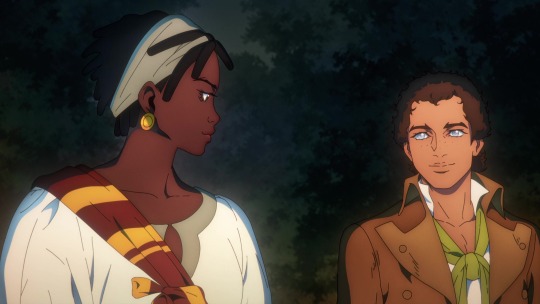
The presence of white clothing suggests a Rada Rite; the ounsi wear all-white robes at Rada ceremonies and make up the choir. Note that many of the depictions or historical accounts of the presence the blood of a sacrificial pig during the Bois Caiman ceremony seem to suggest it is a Petwo rite. as Pigs are sacrificed in the Petwo rite but not in the Rada rite.
Now realistically, the artists/animators decided to depict them wearing simple garb and white clothing may just be the fact that realistically, they weren't able to procure more fancy clothing.
In addition, it's also possible that this was just an animator oversight and the animators chose to depict Edouard per his character art reference sheet. Still, this tells us that Edouard was not initiated in the Vodun religion, which may hint that he might been as intimately tight-knit.
Detail #2. Edouard is singing by himself. No one joins him.

In the aftermath of the revolt, Edouard is showing singing Il mio tesoro intanto and he's pretty much clearly alone singing and while everybody is really chill about, I just found this detail funny because if there ever would be some celebration in a group, they would be singing creole songs as a community and it's unlikely anybody would be able to join him here since only he would have this super niche classical opera knowledge.
However, the more likely explanation of this is that whoever was directing this scene (that one opera fan) wanted their vision actualized and that the piece selected adds to the thematic elements. Still, I decided to leverage this detail into my writing when thinking about how Edouard might feel about how he fits with the other escaped slaves.
Sources and Further Reading:
Eddins, C. N. (2021). Rituals, runaways, and the Haitian Revolution: Collective Action in the African Diaspora.
Mapping. (2022, November 2). In The Streets of Le Cap. https://streetsoflecap.com/mapping/
Lockley, T. (n.d.). Runaway Slave Colonies in the Atlantic World. Oxford Research Encyclopedia of Latin American History. https://doi.org/10.1093/acrefore/9780199366439.013.5
Explore the sites. (n.d.). National Museums Liverpool. https://www.liverpoolmuseums.org.uk/archaeologyofslavery/explore-sites
Haiti: The Bois Caiman Meeting of 1791. (n.d.). http://faculty.webster.edu/corbetre/haiti/history/revolution/caiman.htm
Duffy, J.-C. (2021). Early accounts of the Bois Caïman ceremony. Miami University - Empire and American Religion. https://sites.miamioh.edu/empire/files/2022/08/1791-Early-accounts-of-the-Bois-Caiman-ceremony.pdf
“Demographics of Saint Domingue,” LIBERTY, EQUALITY, FRATERNITY: EXPLORING THE FRENCH REVOUTION, accessed January 31, 2025, https://revolution.chnm.org/d/500.
Bromley, C. J. (n.d.). Resistance and the Haitian Revolution. Slave Resistance: A Carribbean Study. Retrieved January 31, 2025, from https://scholar.library.miami.edu/slaves/san_domingo_revolution/individual_essay/jason.html
Phelipeau, R. (1784). (Cap-Haïtien) Plan De La Ville Du Cap Francais. Barry Lawrence Ruderman Antique Maps Inc. Retrieved January 31, 2025, from https://www.raremaps.com/gallery/detail/49958/cap-haitien-plan-de-la-ville-du-cap-francais-et-de-ses-env-phelippeaux#
Hebblethwaite, B. (2011). Vodou Songs in Haitian Creole and English. Philadelphia: Temple University Press. https://muse.jhu.edu/book/12835.
Maroons and their Communities in the Americas. (n.d.). Politika. https://www.politika.io/en/notice/maroons-and-their-communities-in-the-americas
8 notes
·
View notes
Text
Some Pictures I Took From Fet Gede.
I enjoyed this years Fet Gede. This Sosyete not only celebrates the spirits here in the city. But respects and honors others Day of the Dead traditions also.
Fet Gede in Haiti is just such a past-honoring event. Known as the Festival of the Ancestors, Fet Gede ( = The Sacred Dead) is the Vodou equivalent of Mardi Gras, the Mexican Day of the Dead, and Halloween, all in one. So everyone dresses up.
But here are some pics I took while I was there. Check back for the video.


Spirit Statue. Gede Statue
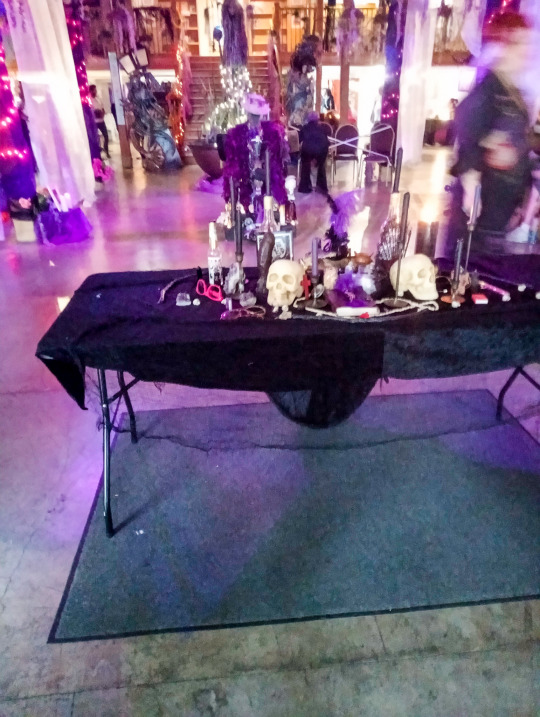
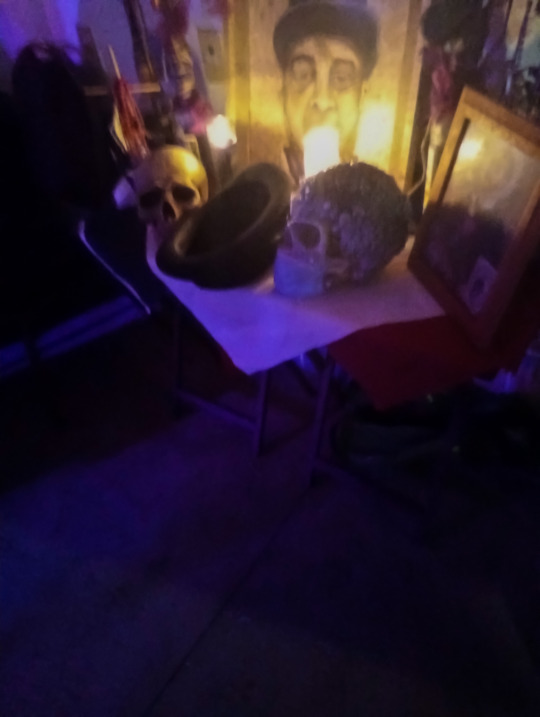
Baron Altar. Baron La Croix

Some kind of death mermaid statue.
It's cool.

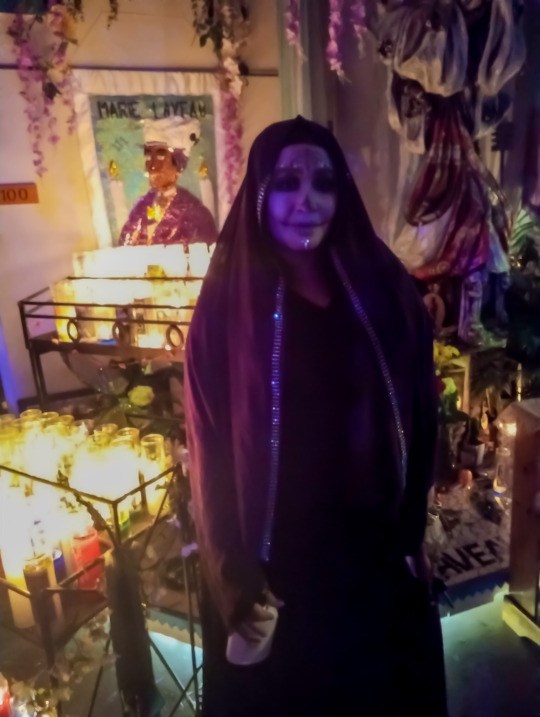
One of the children of the spirits dancers in the Oufo. Dressed as a spirit of the Dead. Gede.
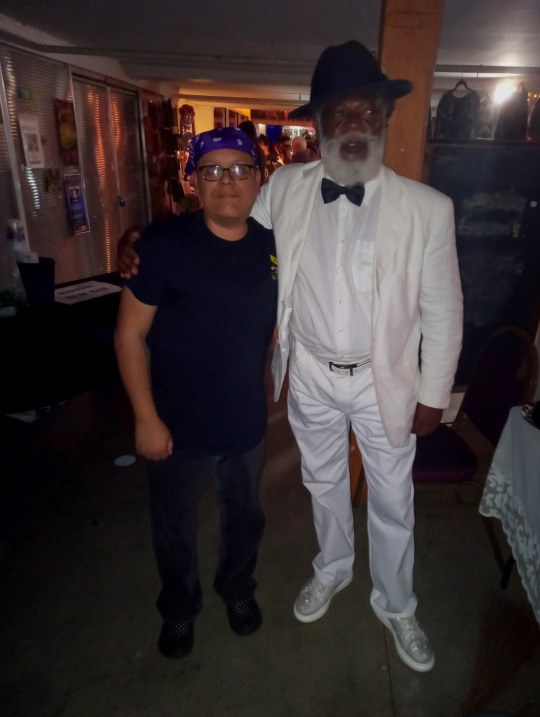
🖕Me and Ghanaian Priest & Master Drummer Osofo Andrew.
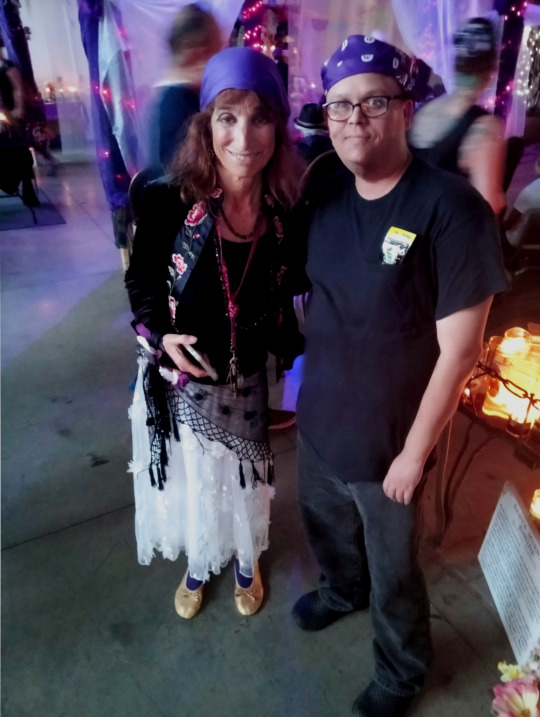
🖕 Me & Mambo Sally.

Taja Nicholle is a Afro-Indigenous Certified Death Doula/Grief Support Counselor. She's does death healing, cleansings readings, Sound Healing, etc.
https://www.therisingroseco.com/

I meet these women and though there costumes were cool.


🖕 the top is of a Haitian Oungan he and Andrew and some others released the Gede spirits after the Fet Gede was over. We told them thank you and then we all sayed a prayer.

This is the Haitian Oungan with the white powder on his face he was dancing and smoking cigarettes the spirits came and jumped a few people that night.
#like and/or reblog!#google search#follow my blog#ask me anything#haitian vodou priest#haitian vodou#Fet Gede#voodoo priestess#Voodoo altar#dia de muertos#catrina#Baron La Croix#new orleans voodoo#Blessing.#new post
7 notes
·
View notes
Text

Vodou pilgrims attend a Mass marking the feast day of agriculture and work, in Port-au-Prince, Haiti, Wednesday, May 1, 2024. Amid the spiraling chaos, a growing number of Haitians are praying more or visiting Vodou priests known as “oungans” for urgent requests ranging from locating loved ones who were kidnapped to finding critical medication needed to keep someone alive. (AP Photo/Odelyn Joseph)
5 notes
·
View notes
Text


Oungan Voodoo Priest Orisha An orisha is that part of a natural force that is disciplined and controllable and that can be cultivated by people using ritual means.
64 notes
·
View notes
Text
316: Toto Bissainthe // Chante Haïti

Chante Haïti Toto Bissainthe 1977, Arion
“These songs are mostly slave songs taken from the Vodou cult. They speak of the quotidian, of the suffering of exile, and the desire of Africa, not as a geographical place but as a mythical land of freedom. They express their resistance and their refusal: resistance to the colonizer, refusal of his politics, of his religion, of his culture, of his language.”
So begins Toto Bissainthe’s statement on the rear of Chante Haïti, her 1977 collaboration with a small combo of Antillean folk and French jazz musicians: vocalists Marie-Claude Benoît and Mariann Mathéus; percussionists Akonio Dolo and Mino Cinélu (Miles Davis, Weather Report, Gong); Patrice Cinélu on acoustic guitar; and Beb Guérin on the double bass. The songs indeed fuse the Vodou ritual of her native Haiti with the European avant garde sounds of her adopted milieu of Paris, where she had moved to pursue acting and found herself a de facto exile due to the political situation back home. Bissainthe had become a prominent figure in the French theatre, performing in new plays by Beckett and Genet and co-founding Les Griots, France’s first Black theatre company; by the late ‘70s, she was an acclaimed recording artist to boot. Her accomplishments made her a prominent figure in the Haitian diaspora and her activist streak is apparent throughout Chante Haïti, explicitly linking the grief and yearning for liberation in these traditional ceremonials with the country’s contemporary struggles.
Like many songs on the album, the Creole words of opener “Soley danmbalab” mourn the people's estrangement from Mother Africa, a crossing which can neither be reversed or repeated. It begins like a field recording, Bissainthe’s soulful, Miriam Makeba-esque voice set to a chorus of rattles and bells and gurgling masculine whispers. As the song develops, her melody wends like a stream through the dense jungle of percussion, dissonant bass, and counterpoint chanting. Eventually, Mino Cinélu’s arrangement becomes more free, the male chorus imploring the Oungan (a male Vodou priest) to intercede with the creator on the people’s behalf as the tune breaks down into an increasingly abstract bass and drum interplay, while the three female singers exchange birdlike vocal improvisations.
youtube
“Ibo Ogoun (Variations)” is even wilder, evoking a trance ritual, the spirits speaking in many tongues through the celebrants as they seek to summon Ogun, God of Iron and War, to lead the battle of liberation. One of the male percussionists times his tanbou beat so that it hits just as he sings certain notes, creating the illusion that he voice has suddenly lurched down an octave for a moment, almost like a DJ freaking a vocal sample. Bissainthe, Mathéus, and Benoît match the intense drumming with some crazy syncopations, sometimes talking, sometimes hissing and whispering, sometimes wailing and ululating.
Most of the album takes on a more meditative tact, anchored by Guérin’s plangent double bass. On the smoky “Papadanbalab,” an entreaty to the serpent creator Damballa to bear witness to the penury of his people, Bissainthe sways over a slinky jazz bass line, Patrice Cinélu adding mellow acoustic fusion licks. The song seems like a brief stopover in a Parisian club. But even the less overtly intense tracks pack plenty of musical interest. “Lamize pa dous” has this hypnotic rhythm that sounds exactly like a micro house beat—in fact, the first thing it made me think of was Ricardo Villalobos’ Alcachofa, or Animal Collective at their campfire ravingest. The song is about the moment of surrender to death, the winnowing of time represented by water encroaching on all sides, the realization too late that “we spend our lives trying to fill the sea with stones.”
Listening to a record like this, especially in light of Bissainthe’s note on the back excoriating the colonialist ethnographer who reduces Haitian folklore to “excitement and violence,” requires at least a smidgen of awareness from the white listener that Chante Haïti is not intended for them. The traditions it engages with are of deep spiritual significance to many Haitians, both in the ‘70s and today. But for those inside and outside the culture who are willing to approach it with respect, Chante Haïti is a fascinating fusion of Antillean and European musics, and a peek into a profound and secret history.
youtube
316/365
#toto bissainthe#haiti#haitian music#vodou#haitian vodou#vodou music#diaspora#spiritual jazz#Kréyol djaz#creole#'70s music#female singer#female musicians#protest music#music review#vinyl record
17 notes
·
View notes
Text
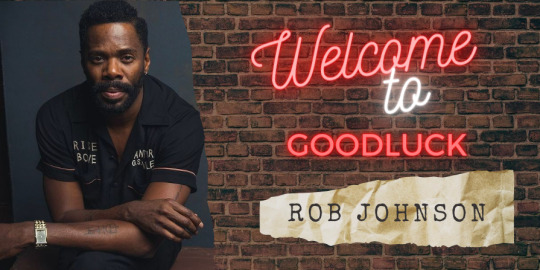
Name: Rob Johnson Being: God (Papa Legba) Occupation: Mayor of Goodluck Traits: Well-spoken, Level-headed, Innovative
Headcanons:
His house is full of outdated modes of communication. Rotary phones and telegrams--he even has an old phone company switchboard as a decorative piece.
There's another version of him roaming around with a much more sinister reputation. A young trickster kinda guy. (This happens often with gods of diasporas.) And for the last time, Baron Samedi is a whole other guy.
Misses year-round warm weather.
Bio:
When you've got a way with words like Rob does, people just can't stop calling out to you. Once upon a time, there wasn't a soul on the west coast of Africa that didn't invoke Elegua before starting a negotiation or setting out on a journey.
But as history goes, journeys from the West Africa became, far and away, the worst kind of nightmare. He was brought to the islands, first. Haiti and Hispaniola and all the foreign lands his worshippers were sent to against their will. He was proud to travel with them--the least a god could do for his people. And he blessed the roads they wandered as best he could, game stacked against them as it was. Gave them what eloquence he had left.
He ended up in Louisiana in the 1890s when a particularly faithful oungan settled in New Orleans. It wasn't home exactly, but it was as near to one as he'd felt in centuries. Incredible music, outstanding food, and an abundance of faith. And America as a whole, for all its faults, had a lot more roads to travel.
He'd always had a soft spot for crossroads. Call him a romantic--the symbolism was just too delicious. He met and blessed all sorts of wanderers, but among them, his favorite was a musician. An old soul if there ever was one. They became good friends and he even inspired a song or two. It felt only fitting, after the icon passed, that his name live on.
So in the early 1940s, Papa Legba, formerly Elegua, now Rob Johnson meandered into backwoods Kentucky. Dangerous territory for a black man traveling alone, but his words had never failed him. It took him all of six months to be elected mayor.
It's a small town. Never seems to make the news. Is absolutely chocked full of inexplicable bullshit, but Rob's the right man to keep a lid on it. Always has a neat and tidy explanation. And if any high-and-mighty sort is looking to come in and cause trouble, they gotta get past him first.
@mayor-rob
5 notes
·
View notes
Text
Horror Movie of the Day: The Serpent and the Rainbow (1988)
Zombie. A word used nowadays to depict flesh eating undead monsters in works of fantasy and science fiction, the very etymology of the word is debated but decidedly African in origin and related to a practice in Haitian vodou. Allegedly a person can be brought back from the dead on the will of a bokor while stripped of their will (said to be achieved with the aid of powder). A phenomenon that was researched by Canadian botanist Wade Davis and documented in a non fiction book that was loosely adapted into this film. A story about a researcher that has to find this powder for a pharmaceutics company while having to survive against the attacks of a bokor leader of the Tonton Macoutes may sound… not great on paper. But the film actually tries depicting vodou as a fully rounded religion. One that might have evil bokor trying to turn you into zombie and drink blood to cast curses, but also has oungan officiating weddings and unifies people culturally. Where the love of Erzulie is not any lesser than that of the Virgin Mary but one and the same. As for the mighty whitey? Mostly out of his depth in a land with it’s own conflicts where he doesn’t belong. The film was directed by Wes Craven of A Nightmare on Elm Street fame, who for the later half of his career felt trapped by the shadow cast by Freddy Kruger. And with good reason: there’s grounds to suspect this film underwent quite a lot of meddling that forced his hand into familiar territory against his wishes to make something more like a political drama. The end result is a film of two souls, one with masterful nightmarish sequences that may come across as exploitative and one that wants to depict Haiti, it’s costumes AND struggles with the nuance and dignity any country deserves (regardless if some of it’s calls are ill fit for an American to make). It is quite a mixed bag but the end results are, at the very least, worth earnest discussion.

6 notes
·
View notes
Text
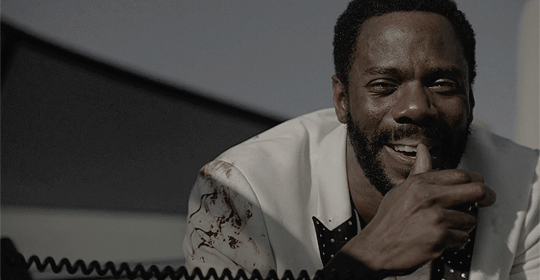
Name: Rob Johnson Being: God Previous Names and Epithets: Elegua, Papa Legba, The Devil at the Crossroads Gender/Sexuality: Ace Man Origin: Benin How Long in Gooduck?: 1940s Occupation: Mayor of Goodluck Traits: Well-spoken, Level-headed, Innovative
Bio:
When you've got a way with words like Rob does, people just can't stop calling out to you. Once upon a time, there wasn't a soul on the west coast of Africa that didn't invoke Elegua before starting a negotiation or setting out on a journey.
But as history goes, journeys from the West Africa became, far and away, the worst kind of nightmare. He was brought to the islands, first. Haiti and Hispaniola and all the foreign lands his worshippers were sent to against their will. He was proud to travel with them--the least a god could do for his people. And he blessed the roads they wandered as best he could, game stacked against them as it was. Gave them what eloquence he had left.
He ended up in Louisiana in the 1890s when a particularly faithful oungan settled in New Orleans. It wasn't home exactly, but it was as near to one as he'd felt in centuries. Incredible music, outstanding food, and an abundance of faith. And America as a whole, for all its faults, had a lot more roads to travel.
He'd always had a soft spot for crossroads. Call him a romantic--the symbolism was just too delicious. He met and blessed all sorts of wanderers, but among them, his favorite was a musician. An old soul if there ever was one. They became good friends and he even inspired a song or two. It felt only fitting, after the icon passed, that his name live on.
So in the early 1940s, Papa Legba, formerly Elegua, now Rob Johnson meandered into backwoods Kentucky. Dangerous territory for a black man traveling alone, but his words had never failed him. It took him all of six months to be elected mayor.
It's a small town. Never seems to make the news. Is absolutely chocked full of inexplicable bullshit, but Rob's the right man to keep a lid on it. Always has a neat and tidy explanation. And if any high-and-mighty sort is looking to come in and cause trouble, they gotta get past him first.
Headcanons:
His house is full of outdated modes of communication. Rotary phones and telegrams--he even has an old phone company switchboard as a decorative piece.
There's another version of him roaming around with a much more sinister reputation. A young trickster kinda guy. (This happens often with gods of diasporas.) And for the last time, Baron Samedi is a whole other guy.
Misses year-round warm weather.
5 notes
·
View notes
Note
For Valerie, please!
🦾🍙🎤❔(Placide and Brigitte)
Oh that's gonna be a looong post. Sorry it took me a while to answer!
As Valerie's lore is mostly based on my fic 'Tower', which is currently unfinished, I'll be either vague or brief about certain things, as I don't want to spoiler the upcoming chapters XD
🦾 - Johnny Silverhand
Okay, as I ship Valerie with Johnny, I want to make it pretty short so not to spoiler too much. Instead, I'll try to focus on some brief moments from their life together.
I'd describe their relationship as frenemies (since the beginning)-to-friends-to-POTENTIAL-lovers (after Ebunike events).
In Night City, Valerie could never find the right lover - a faithful and caring, strong-willed and appreciative man she could always trust. A person, that her father for her mother was. When Valerie had to share her brain with Johnny after the heist, she quickly formed a bond with him. Through endless squabbles, arguments, jokes and constant rescue of each other (when Johnny saves Valerie due his engram and biochip abilities) Valerie found Johnny was the only man who truly understood her as he literally could read her brain.
They often clash ideologically. While Johnny transcends morality for the sake of his idealistic goals, Valerie remains firmly convinced that destruction is not the solution. Like inverted magnets, in other words. In turn, Valerie often remarks that Johnny seems to like it when she sees inconsistencies in his argument. Either he sees this as a game, or he likes it when Valerie shows strength of character - only Johnny knows.
However, trust and respect develop between them. Johnny likes Valerie's loyalty to a certain code of honor (e.g., she is always ready to help, never betrays). Johnny gradually begins sharing details from his past, particularly about his life before the war (his parents, life in Texas, etc.), which he rarely shared with Rogue. Valerie appreciates this gesture, as she sees it as a sign of trust. But what Johnny is thankful for the most, thinks Valerie, is that she doesn't see an engram but a true living person.
🍙 - Goro Takemura
Pretty quickly, Valerie develops trust in Goro, and whether it's Valerie's intuition or Goro's charm... it's probably both. They initially work with each other because of their deal (Valerie helps Goro avenge Saburo's death, and Goro helps her reach out to the biochip developers). But after the events of the Parade, when Valerie saves Goro, their communication loses its just-partners-in-crime framework and develops into mentor-ward chemistry. Goro often patronizes Valerie (and sometimes goes too far), and she, although often teasing Goro's conservatism, usually obeys. Goro becomes a father figure to Valerie.
🎤- Kerry Eurodyne
Valerie hasn't met Kerry yet in her canon. However, I won't be surprised if she develops a very positive relationship with the rockerboy. After all, he is a friend of Johnny, and Valerie likes his music (more than Johnny's, which Silverhand takes like he was stabbed in the heart).
❔ - Placide
Placide and Valerie's relationship can be described as "from foes to friends" (with benefits). As in canon, Placide and Valerie meet while she seeks the "Voodoo Boys" for biochip information. Valerie quickly realizes she will need to be particularly careful around this laconic big man.
Brigitte doesn't inform Placide of her plans to steal the biochip, and Valerie realizes the gang is splitting. She almost pays for this realization with her life when Placide kills agents from the Network Watch and decides to deal with her to destroy the biochip. As Valerie nears death, she realizes Placide values the real world and the small community of surviving Haitians much more than annihilation in the Web, as the 'Voodoo Boys' aspire to. He, as the son of the last Oungan priest in Haiti, dreams of resurrecting faith in the deities of the Lwa, which was quickly replaced with the worship of the AI in Night City. Placide leaves Valerie alive, and Valerie keeps her promise and doesn't give up on his plans for Brigitte. For this honesty, Placide rewards her by teaching her a couple of tricks in cyberspace.
Here's a little spoiler for upcoming chapters:
In Valerie, Placide sees the uncorruptedness of the city and the decency so unusual for the Night City, and Valerie sees in Placide his leadership qualities and devotion to his ancestors' culture.
After a joint search for Rache Bartmoss's deck to find the DataKrash codes, Valerie and Placide spend their first and last night together. Valerie needs to return to the city, and Placide realizes that he cannot leave his community even for Valerie's sake. Their paths diverge, but they maintain a fairly friendly relationship in the future.
❔ - Brigitte
Contrary to Placide, Valerie and Maman Brigitte developed strained relationships. Since Valerie fulfilled the terms of the deal with the 'Voodoo Boys' and made it to Alt Cunningham, she didn't have time to leave the Net when Brigitte told her to stay away. She knew Valerie was protected by Alt in virtual reality and Valerie was a lot stronger in the real world, so they just decided to stay apart.
The cool truce didn't last long. Valerie gained Placide's trust when she didn't turn him over to Brigitte after his sabotage (See: Placide). After seeing this interference in the affairs of the 'Voodoo Boys', Brigitte decided to contact someone from Night City, who had long held a grudge against Valerie.
Since the fic isn't finished the "Voodoo Boy's" arc is not complete, so... to be continued.
#oc questions#oc: valerie attal#cyberpunk 2077#johnny silverhand#goro takemura#kerry eurodyne#placide#brigitte#TYSM#And sorry it took so long#I had to finish my research proposal first#And irony I wrote more about Placide and Briggitte than Goro and Johnny XD
13 notes
·
View notes
Note
"You remind me of the babe-"
"…babe with the power-"
"…power of voodoo-"
"Hey you outta it's out of line! You must answer me differently."
[ I just saw a post with a question about "magic dance" and could not resist ]
Mozenrath glanced between all of them, with no idea what they were on about. “You do realise that voudou is an African monotheistic religion, right?” He folded his arms and leaned back in his chair. “Not exactly ‘black magic.’”
Or rather it was exactly ‘black magic’ since black was supposedly evil, and the illogical conclusion was that black people are evil. And that their religion was evil, too, thus it happens to be magic. Hence ‘black magic.’
He rolled his eyes at the ridiculous notion. “If you want real voudou, go speak with an oungan or a mambo in Haiti.”
10 notes
·
View notes
Text
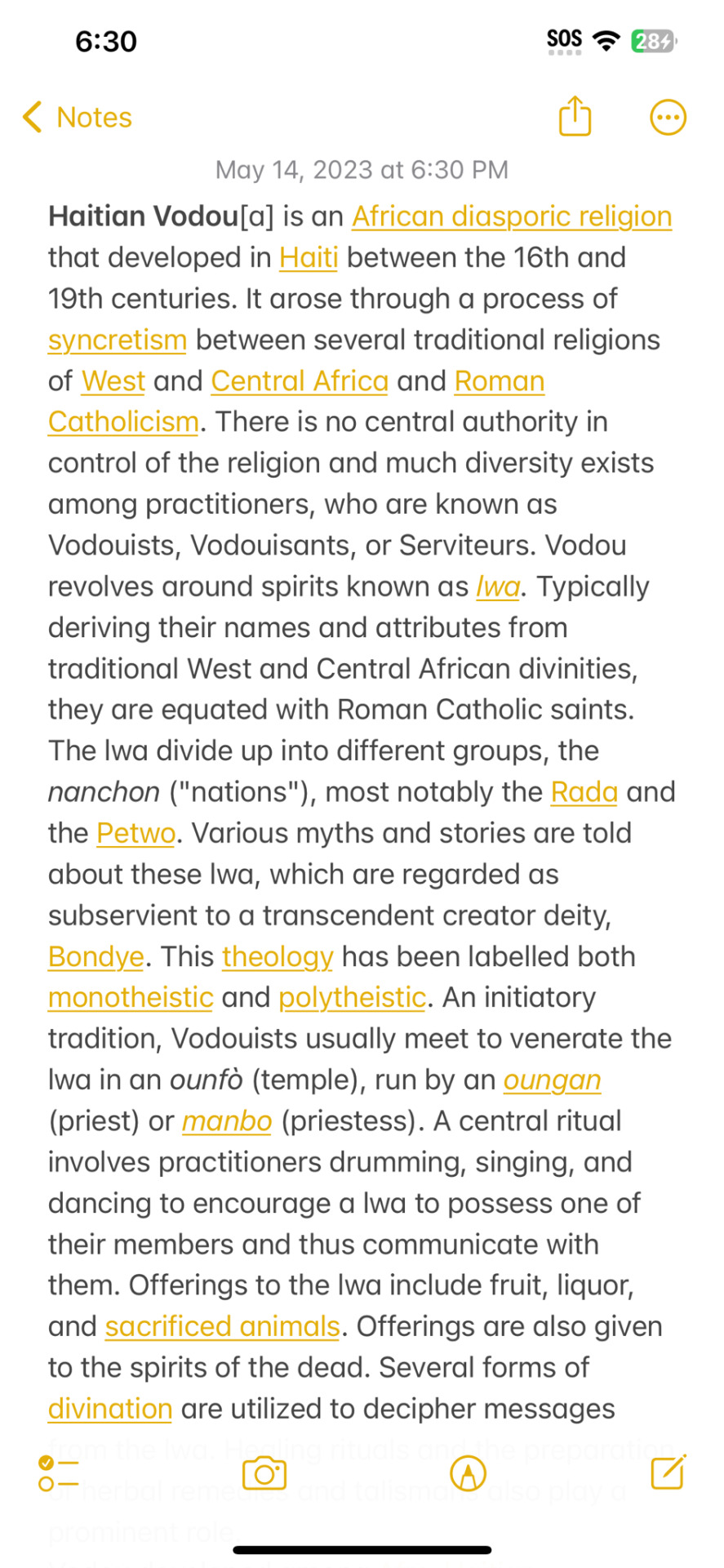
Haitian Vodou[a] is an African diasporic religion that developed in Haiti between the 16th and 19th centuries. It arose through a process of syncretism between several traditional religions of West and Central Africa and Roman Catholicism. There is no central authority in control of the religion and much diversity exists among practitioners, who are known as Vodouists, Vodouisants, or Serviteurs. Vodou revolves around spirits known as /wa. Typically deriving their names and attributes from traditional West and Central African divinities, they are equated with Roman Catholic saints.
The Iwa divide up into different groups, the nanchon ("nations"), most notably the Rada and the Petwo. Various myths and stories are told about these Iwa, which are regarded as subservient to a transcendent creator deity, Bondye. This theology has been labelled both monotheistic and polytheistic. An initiatory tradition, Vodouists usually meet to venerate the Iwa in an ounfo (temple), run by an oungan (priest) or manbo (priestess). A central ritual involves practitioners drumming, singing, and dancing to encourage a wa to possess one of their members and thus communicate with them. Offerings to the la include fruit, liquor, and sacrificed animals. Offerings are also given to the spirits of the dead. Several forms of divination are utilized to decipher messages as CLONES
1 note
·
View note
Text

Vodou revolves around spirits known as lwa. Typically deriving their names and attributes from traditional West and Central African divinities, they are equated with Roman Catholic saints. The lwa divide up into different groups, the nanchon ("nations"), most notably the Rada and the Petwo. Various myths and stories are told about these lwa, which are regarded as subservient to a transcendent creator deity, Bondye. This theology has been labelled both monotheistic and polytheistic. An initiatory tradition, Vodouists usually meet to venerate the lwa in an ounfò (temple), run by an oungan (priest) or manbo (priestess). A central ritual involves practitioners drumming, singing, and dancing to encourage a lwa to possess one of their members and thus communicate with them. Offerings to the lwa include fruit, liquor, and sacrificed animals. Offerings are also given to the spirits of the dead. Several forms of divination are utilized to decipher messages from the lwa. Healing rituals and the preparation of herbal remedies and talismans also play a prominent role.

#african culture#african#afrakan#kemetic dreams#brownskin#afrakans#africans#brown skin#afrakan spirituality#vodou#lwa#african spirituality#manbo#oungan#ounfo#bondye#vodun#vodoo#petwo#haiti#haitian
58 notes
·
View notes